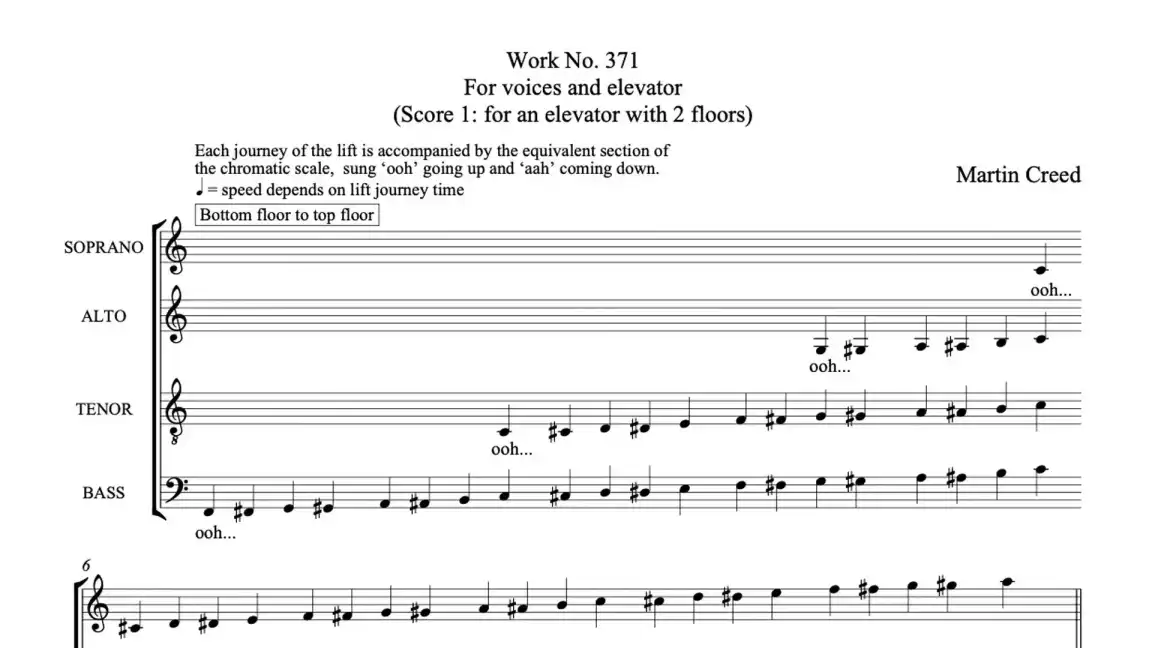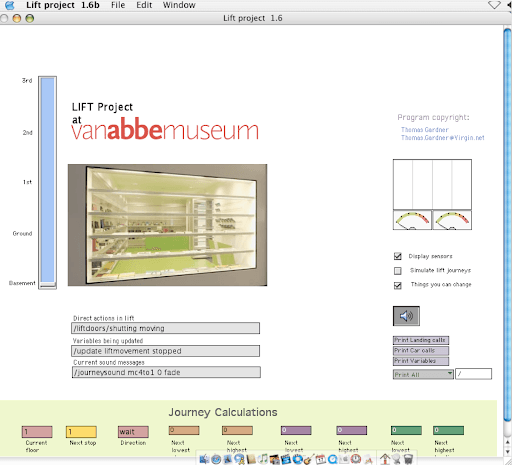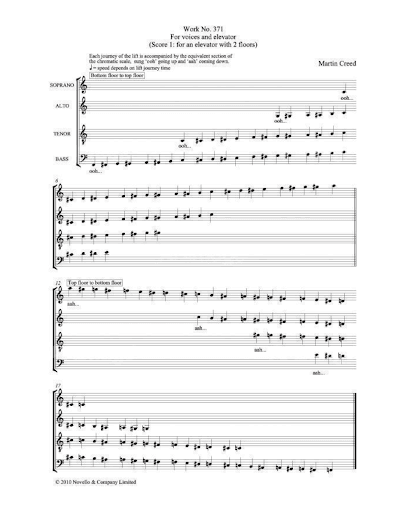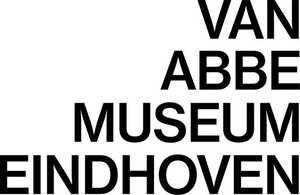
Work No. 371 (2004) - Martin Creed
In the collection of the Van Abbemuseum.
Martin Creed’s Work No. 371 (2004) is a site-specific installation of ascending and descending choral flourishes. The sound-based work is installed in an elevator at the Van Abbemuseum and has been running constantly since its acquisition. The preservation questions are centering around sustaining its concept and manifestation for the future. LI-MA, in collaboration with the Van Abbemuseum, delves into these complexities in a comprehensive case study.
Brief Description of the Work
Work No. 371, elevator ooh/ahh up/down is a site specific time-based media artwork, installed in an elevator by Turner Prize-winning artist Martin Creed. Installed in the elevator of the Van Abbemuseum, this piece combines sound, technology, and physical movement to create a playful and immersive experience for visitors. As the elevator rises, the voices of bass, tenor, and soprano singers harmonise with an “ooh,” while descending, they shift gently to an “ahh.”

Work No. 371 is powered by a laptop that uses custom software to translate the elevator's movements into sound. Each time an elevator button is pressed, the software interprets signals from the elevator control panel, triggering one of 40 unique audio files that correspond to the elevator's journey. This combination of mechanical and digital components is essential to the artwork, but it also presents risks: what happens if the laptop fails or if the software becomes outdated?
Martin Creed’s Lift Works
Work No 371 is based upon a score composed by Martin Creed titled, “Work No. 371: For voice and elevator (Score 1: for an elevator with 2 floors)” and was released in three editions. One of those editions is currently owned by the Van Abbemuseum, another is in the collection of the Fruitmarket Gallery in Edinburgh and the last is believed to be in a private collection. The work is one of a number of related works by the artist called colloquially, Martin Creed’s Lift Works. What makes it distinct from these related works—most notably Work No. 409—is the performance of the score. Where for Work No. 409 the singers sing all parts of the scale together, for Work No. 371 the singers sing one after the other, with some overlap, each performing within their individual vocal reach.

The Challenge: How To Preserve a Sound?
In the context of the Collaborative Infrastructure for Digital Art project, LI-MA's conservation team, consisting of Olivia Brum, Gaby Wijers, Joost Dofferhoff, infrastructure, Mauricio van der Maesen de Sombreff, and Claudia Röck, initiated an investigation into these preservation challenges. Through collaboration with experts from the Van Abbemuseum and the London College of Communication, the research team examined several strategies for preserving Work No. 371 while staying true to Creed’s original vision. One of these experts was Thomas Gardner, who developed of the custom software that runs the work.
The team posed critical questions: How can we adapt Work No. 371 to new technologies? What happens if the elevator needs to be refurbished or the work needs to be moved? How do we document and study different versions and performances of other editions of Work No. 371 and related lift works? How can the work be sustainably preserved so that it is accessible in the long run?
The Ups and Downs of It: Adapting and Evolving the Work
Three potential solutions emerged:
-
Stockpiling replacement hardware: This short-term strategy involves gathering enough old laptops to keep the work running for as long as possible, but it is ultimately unsustainable.
-
Migrating the software: This approach focuses on adapting the Max MSP software to run on modern devices, significantly extending the artwork's lifespan.
-
Emulation and re-creation: This involves rebuilding the software from the ground up using new technology, creating a fresh foundation for the work while preserving its original functionality.
In the meantime, LI-MA and the van Abbemuseum have taken proactive steps to safeguard the artwork. They have created disc images of the laptop's hard drive, backed up the audio files, and documented the entire system setup. This thorough documentation will enable future teams to understand and recreate the work as needed, preserving Creed’s delicate balance of art and technology.
Giving Preservation a Lift
Work No. 371 is a reflection on the relationship between sound, space, and movement. Yet, its existence depends on a fragile mix of old and new technologies. Key components at risk are the iBook G4, which runs the program continuously, and the Max MSP software, which only operates on older Macs.
The research conducted by LI-MA serves as a valuable case study in the preservation of time-based media art, offering insights that go beyond this particular piece. To preserve the work, the Van Abbemuseum could: (1) stockpile compatible Macs, providing a temporary fix; (2) adapt the Max MSP software for newer computers; or (3) replicate its functions in a new software that could run on modern systems, like a BrightSign player. Meanwhile, the museum has taken smaller preservation steps: creating a disc image of the iBook G4, copying and organising audio files, and documenting these actions. These measures, led by ICT Coordinator Peter Claassen and documented by Junior Conservator Olivia Brum, help sustain the artwork while a long-term solution is explored.
As we move into the future, how can we continue to preserve artworks that depend on rapidly changing technologies? For Work No. 371, the answer lies in finding the delicate balance between hardware and software changes and ensuring that the artwork’s intended effect remains consistent.
Research by LI-MA team: Olivia Brum (Junior Conservator), Joost Dofferhoff (Registrar and Assistant Conservator), Gaby Wijers (Director, LI-MA). In collaboration with: Thomas Gardner (Course Leader, London College of Communication), Dagmar Marent (Van Abbemuseum), Diederik Koppelmans (Head of Technical Department, Van Abbemuseum), Peter Claassen (ICT Coordinator, Van Abbemuseum), Steven ten Thije (Head of Collections, Van Abbemuseum), and Aurora Loerakker (Collection Manager, Van Abbemuseum).
Header: Martin Creed, Work No. 371, choral piece, 2024.








